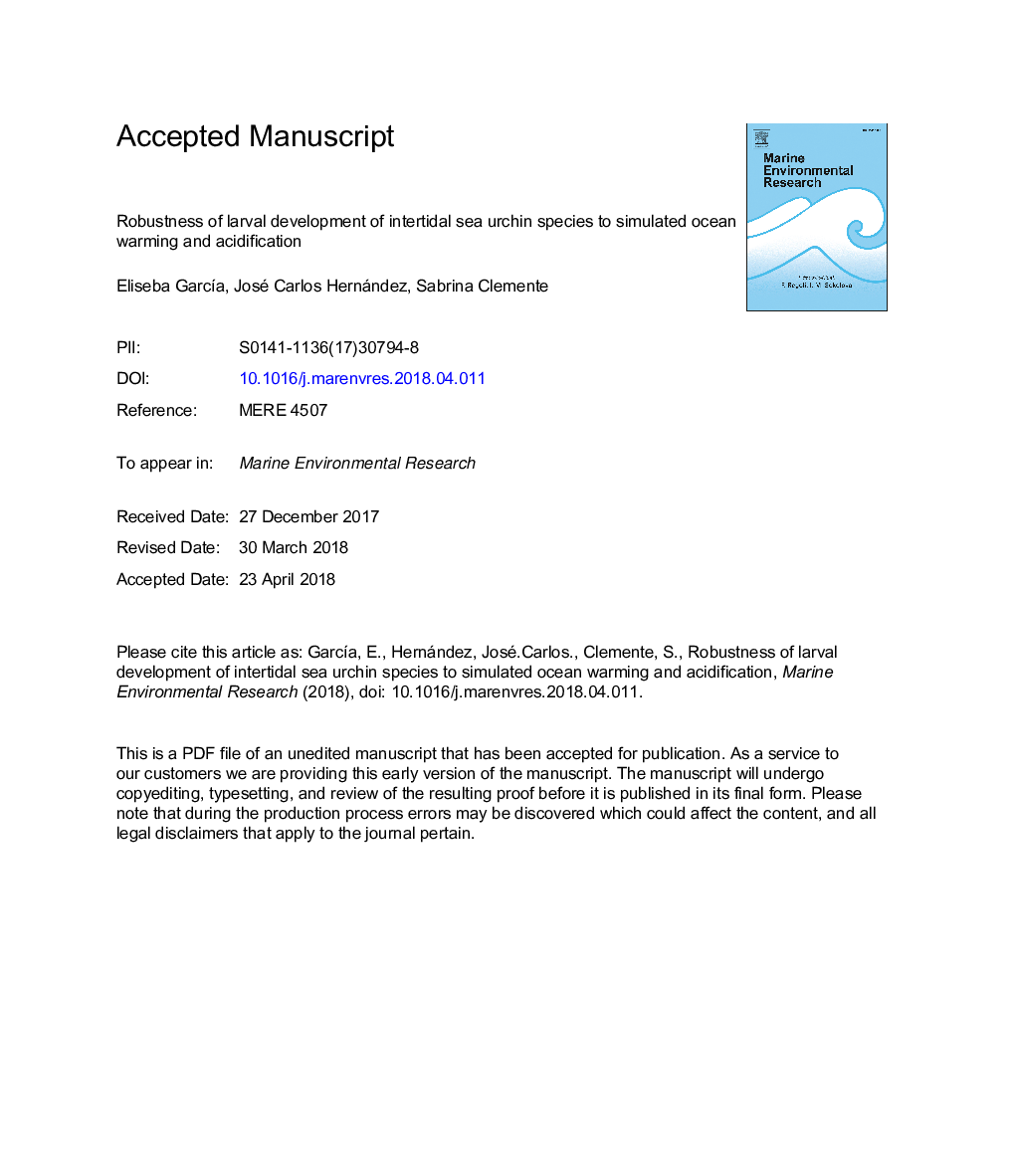| Article ID | Journal | Published Year | Pages | File Type |
|---|---|---|---|---|
| 8886223 | Marine Environmental Research | 2018 | 42 Pages |
Abstract
Ocean warming and acidification are the two most significant side effects of carbone dioxide emissions in the world's oceans. By changing water, temperature and pH are the main environmental factors controlling the distribution, physiology, morphology and behaviour of marine invertebrates. This study evaluated the combined effects of predicted high temperature levels, and predicted low pH values, on fertilization and early development stages of the sea urchins Arbacia lixula, Paracentrotus lividus, Sphaerechinus granularis and Diadema africanum. Twelve treatments, combining different temperatures (19, 21, 23 and 25â¯Â°C) and pH values (8.1, 7.7 and 7.4 units), were tested in laboratory experiments. All of the tested temperatures and pH values were within the open coast seawater range expected within the next century. We examined fertilization rate, cleavage rate, 3-day larvae survival, and development of the different sea urchin species at set time intervals after insemination. Our results highlight the susceptibility of subtidal species to environmental changes, and the robustness of intertidal species to ocean warming and acidification.
Related Topics
Physical Sciences and Engineering
Earth and Planetary Sciences
Oceanography
Authors
Eliseba GarcÃa, José Carlos Hernández, Sabrina Clemente,
